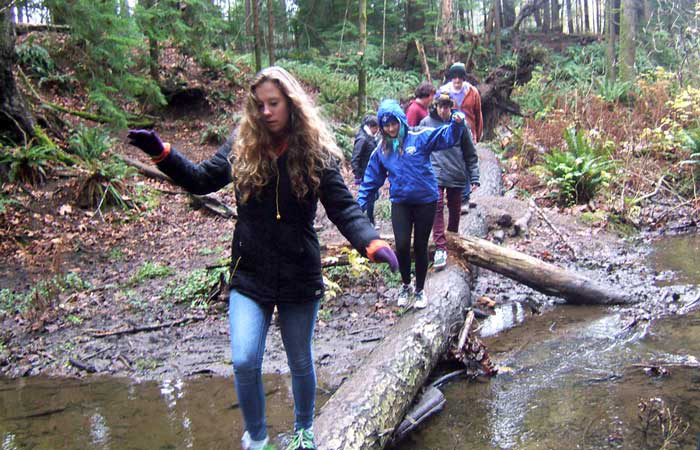Malcolm was just saying about breaking pitchforks, hard work. Would your grandfather have had a little forge here, or a blacksmith he would have gone to?
Marguerite: I think he had something.
You can make your own handles but the fork itself, I mean, everything was made by somebody here.
Maureen: Everything was as handmade as possible, and of course a lot of the handles were made of the local wood.
Marguerite: And let me tell you, they lasted longer, far longer and worked better, than the ones you buy now.
Maureen: What you buy is throwaway.
Jim: No Chinese factories sending stuff in.
Marguerite: I’m on a farm now with horses but especially the newer forks, they just fall apart. You have to reinforce them. So things were better. They were rustic but they lasted longer. Those are the kind of things that make your history real.
We don’t like to mention it nowadays. But that was life then. You’ve got to realize you cannot put your values onto what was before. And I have to tell you, I went to Ireland – our relations are from Ireland and I went about five years ago – and there were big, big celebrations in Belfast. Their City Hall was celebrating its 1000th birthday and I’m thinking, Oh my goodness! And we get excited at 100? So you know how we are really quite new.
We’re coming up to the hundredth anniversary of Courtenay.
Marguerite: And those of you who have great-grandparents, it’s kind of hard to listen… I have great-grandchildren and they don’t listen to me. They’re too busy. But remember, we regret not having paid attention to all the stories that we heard. Listen to them. Find out what they did and wherever they came from.
Jim: I wish I’d asked a lot more questions. You guys are amazing, how much knowledge you have of your own family history. Our family, not so much. An awful lot more questions than answers.
Maureen: Especially when our family are pioneers here in the Comox Valley. 1889, my great-grandparents came.
Marguerite: We’re pioneer families, so in our family there’s Hardies, and McQuillans – we’re related to basically all the McQuillans because it was three cousins, and there’s other Morrisons but not too many. I think our name, Morrison, is running out now.
Malcolm: One left, one boy.
Marguerite: You see that’s how names starting getting lost too. So Malcolm, on his other side are people from Merville. In pioneer days, you had to go a long way to find somebody that wasn’t a relation.
Marguerite: And our mother’s side, her mother was born in Sandwick. Do you know where Sandwick is? Before you get to Tsolum, that’s what they call the prairie there. And she was born there, and our great grandmother was the midwife for the area, for all kinds of people. That was before the hospital.
Jim: Nobody was born in the hospital. Everybody was born at home and if you were lucky you had a midwife.
Jim: Just before we go, I’d like to make a little geographical context. We’ve been talking about just within about a half a kilometer of the school here, and I want to zoom out a little. (shows a big aerial map)
This is the creek, Morrison Creek, that the water was diverted out of for the flume, and this is Puntledge Park where it flows into the Puntledge River. All this green patched area is wetlands. There’s a lot of beaver ponds in there, creating the wetlands, and there’s springs in there. And here was a Fisheries project that reactivated some of the old flume, sometime in the 90s. They diverted a small amount of water into Arden Creek for some good salmon habitat. It tended to dry up in the summer, so they diverted a little bit of Morrison water to keep it flowing all year.
Marguerite: And it had been that way originally, too. We lived just at the corner of Arden and Lake Trail, and this creek was right behind our place. And our dad said it used to be a full creek year-round, and he remembered fishing there and getting a steelhead.
Jim: Anyway, there’s huge numbers of salmon, all species except sockeye, that go up Morrison Creek and get all the way up into the headwaters, both Coho and pink get up there and they’ve done so in huge numbers this year. So we’ve got all of those salmon in there, which you can smell right now. They smell really, really good right now! Salmon were really important food for everybody living in this area, going way, way back into the First Nations time, and continued to be when the Europeans came.
Anybody seen all the stakes, the fish traps on the flats when the tide’s out? The First Nations were trapping huge numbers of salmon there, and that was both their food and trade goods, so they would trade all over as far as Alberta, over the Rockies. And there’s also the Morrison Creek lamprey, and they’ve been around, not in this creek, but they’ve been around for over 200 million years, more or less.
(the group reconvenes outside, behind the school)


